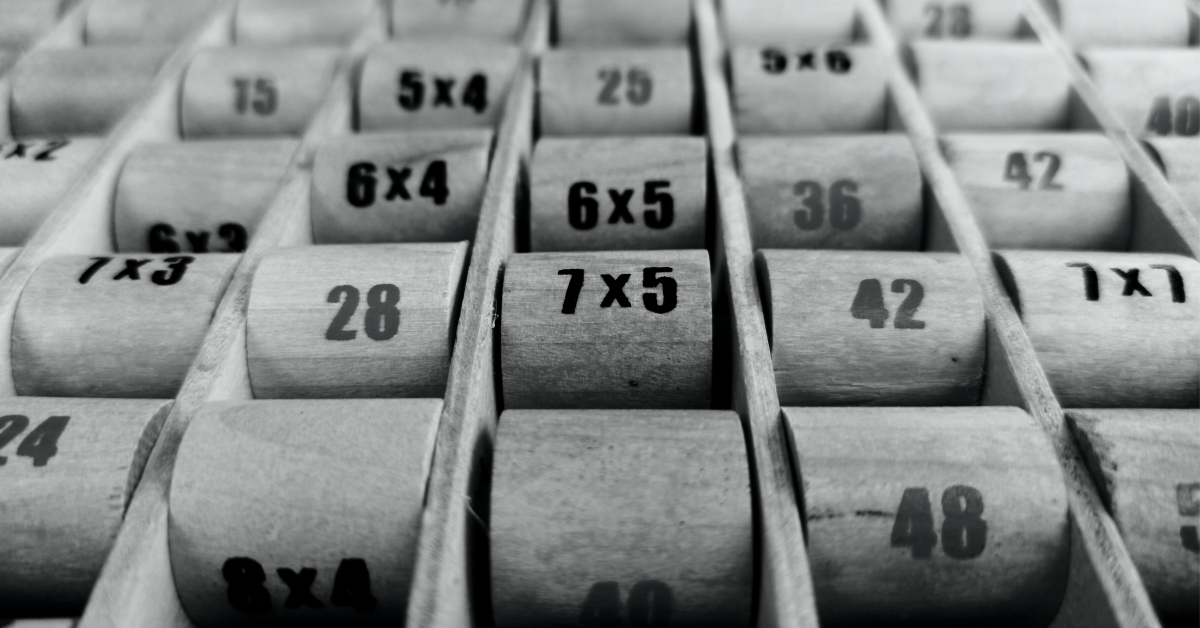Sep07
Dyscalculia Multiplication Tables
Dyscalculia, a learning disorder related to math skills, can result in significant challenges for children throughout their formative years. Children with dyscalculia often face difficulties when it comes to learning multiplication tables. Understanding why this occurs and discovering ways to provide effective support is crucial to helping these children overcome their obstacles and build a strong foundation in mathematics.

Índice
Dyscalculia Multiplication Tables: Challenges Faced
Multiplication tables are a cornerstone of mathematics, providing the foundation for a variety of more advanced concepts and problems. However, for children with dyscalculia, this seemingly simple process can be overwhelming and frustrating. This is due to several key factors:
- Numerical Processing: Children with dyscalculia often have difficulty with numerical processing, which makes remembering and managing number sequences, such as multiplication tables, a challenge.
- Limited Short-Term Memory: Short-term memory plays an important role in learning multiplication tables, as it involves retaining information temporarily while carrying out the calculation. Children with dyscalculia may have difficulty maintaining and manipulating numbers in their short-term memory.
- Pattern Recognition Difficulties: Effective learning of multiplication tables involves recognizing numerical patterns. Children with dyscalculia often struggle with identifying these patterns, making it difficult to internalize the multiplication tables.
Strategies to Help Children with Dyscalculia Learn the Multiplication Tables
Although learning multiplication tables can be challenging for children with dyscalculia, there are effective strategies that can make a significant difference in their learning process:
- Visual Approach: Using visual methods, such as colorful diagrams, graphs, and drawings, can help children better understand patterns and relationships in multiplication tables. These visual elements can make concepts more tangible and accessible.
- Meaningful Connections: Helping children connect multiplication tables to real-world situations can make learning more relevant and understandable. For example, relating multiplication to everyday problems can facilitate the assimilation of concepts.
- Use of Mnemonic Strategies: Mnemonic strategies, such as using rhymes, songs, or acronyms, can help children memorize multiplication tables more effectively. These tools can make the process more memorable and fun.
- Multisensory learning: Integrating different senses into the learning process, such as touch and movement, can improve information retention. Using tactile materials, such as blocks, and doing hands-on activities can strengthen comprehension.
- Regular Practice and Repetition: Consistent practice is essential to strengthening long-term memory. Establishing a practice routine and providing regular opportunities to review multiplication tables can help to improve retention.
Conclusion
Learning multiplication tables can be a particular challenge for children with dyscalculia due to difficulties faced in number processing, memory, and pattern identification. However, through adaptive strategies and appropriate support, it is possible to help children work through their challenges and develop a solid foundation in mathematics. By creatively and comprehensively addressing these difficulties, we are paving the way for children with dyscalculia to face mathematical challenges with greater confidence and succeed in their educational goals.
If you have any concerns about whether your child has dyscalculia, feel free to take this free dyscalculia test. You will receive the results instantly.
Early detection can help reduce the challenges children with dyscalculia face.
- Learning Difficulties in Math: 4 Key Strategies for Effective Intervention - 13 de January de 2025
- Difficulties in Mathematics: Navigating the Consequences of Dyscalculia - 28 de May de 2024
- Dyscalculia in High School - 4 de March de 2024

